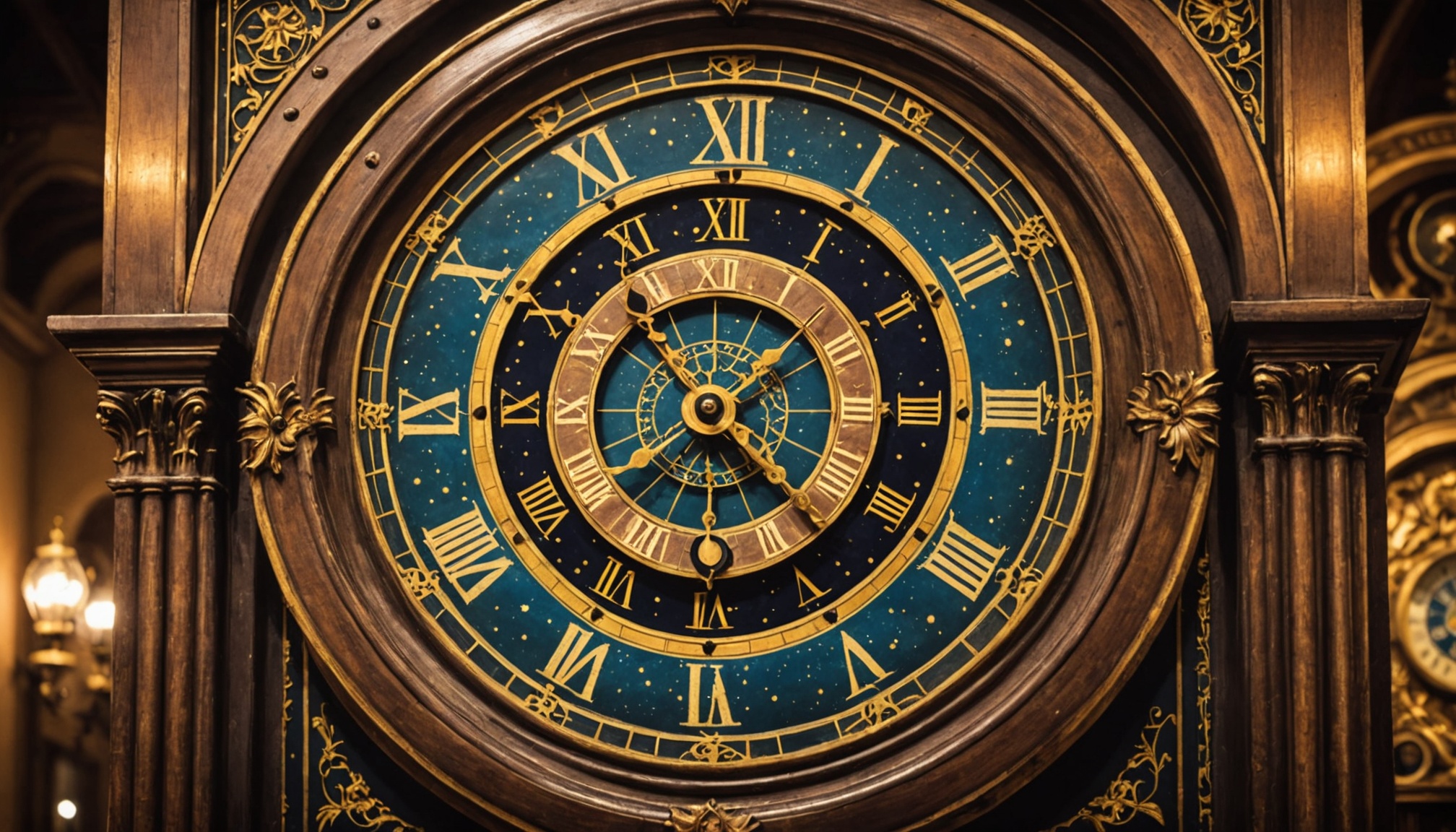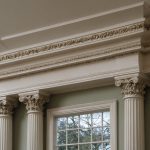Antique astronomical clocks are more than mere timepieces; they are masterpieces that blend artistry, engineering, and history. Each clock tells a unique story, reflecting humanity’s quest to understand the cosmos. Whether you’re a collector, history enthusiast, or simply curious, exploring the intricate mechanisms and stunning designs of these clocks can deepen your appreciation for both timekeeping and craftsmanship. Discover how to identify, value, and cherish these remarkable artifacts.
Understanding Antique Astronomical Clocks
Antique astronomical clocks are captivating remnants of horological innovation and artistry. These intricate timepieces serve as both timekeeping instruments and historical artifacts, reflecting the convergence of science and art over centuries. Notably, the Prague astronomical clock, or Orloj, stands as a testament to this blend. With its astronomical dial, calendar dial, and mechanical figures, it offers a remarkable glimpse into the cultural impact of such creations. The Prague clock’s heritage is steeped in legends and historical narratives, illustrating its enduring significance.
Dans le meme genre : Essential Tips for UK Homeowners to Safeguard and Optimize Their Home”s Electrical Wiring
These clocks are distinct from regular timepieces in their mechanical sophistication and precision. An antique astronomical clock often features mechanical innovations like moon phases and celestial positions, drastically distinguishing it from more straightforward clocks. The craftsmanship required to build such mechanisms underscores the historical importance and ingenuity involved.
As we delve deeper into these antique timepieces, it becomes evident that their allure lies in their ability to evoke the grandeur of celestial mechanics and human creativity. Understanding their features and history can provide a foundation for appreciating both their artistic and functional merits.
A voir aussi : Ultimate Guide to Budget-Friendly Soundproofing Solutions for Bedrooms in the UK
The Craftsmanship and Design of Astronomical Clocks
Techniques in Clockmaking
The craftsmanship of vintage clocks draws heavily on historical clockmaking techniques refined over centuries. From the intricate gears to the precise clock mechanisms and movements, every component highlights the mastery involved in creating these timepieces. Horologists specialized in mechanical clock technology worked tirelessly to achieve accuracy, ensuring that astronomical clocks could display time, date, and celestial events consistently. These techniques have positioned astronomical clocks as fascinating showcases of the art of clockmaking, where durability and detail serve as cornerstones.
Unique Design Features of Astronomical Clocks
Astronomical clocks boast unique design features, often distinguished by complex astronomical clock design elements like celestial calendars and zodiacal rings. Such features not only enhance their visual appeal but also their functionality, making them educational tools offering insight into both time and the cosmos. These clocks often incorporate moving sculptures, which were particularly popular in antique timepieces from notable periods such as Louis XVI.
The Role of Famous Horologists in Clock Development
Influential famous horologists have played a pivotal role in advancing the development of astronomical clocks. Figures such as Mikuláš of Kadaň have left indelible marks on the history of these clocks. Their innovations in clock precision and design aesthetics continue to inspire modern horologists, preserving the legacy and historical significance of timekeeping for future generations.
Collecting and Valuing Antique Astronomical Clocks
Tips for Assessing Clock Value and Authenticity
When collecting antique clocks, understanding their value is crucial for any enthusiast or potential investor. Begin by examining the clock’s provenance; a clear history and documentation often enhance its value. Look for signatures or marks that can link the clock to famous horologists or notable workshops. Understanding vintage clock valuation involves meticulous evaluation of its mechanical integrity and aesthetic condition. Ensure the mechanical components are original and in working order, as modifications can significantly impact the clock’s worth.
Authenticity is another pivotal aspect. Scrutinize the craftsmanship of antique timepieces for elements like the patina, which should not appear excessively polished, as it might suggest recent interventions. Consult with an expert or use appraisal services for an unbiased assessment.
Overview of the Antique Clock Market and Auction Houses
The market for antique astronomical clocks is buoyant, with dedicated antique clock auctions offering a platform for both seasoned collectors and novices. Renowned auction houses specialize in these complex timepieces, offering insights into their history of astronomical clocks and providing provenance details.
In the auction environments, the significance of celestial mechanics in clocks often piques interest, showing how these scientific instruments served as timekeepers and decorative pieces. Auction houses act as valuable resources, facilitating networking among enthusiasts and offering potential investment opportunities.
Personal Experiences of Collectors and Notable Collections
Collectors often share enriching stories of acquiring rare antique astronomical clocks, detailing their historical connections and mechanical intricacies. Personal experiences highlight the educational value and joy of owning a piece of history. Notable collections, like those at museums or private estates, demonstrate the broad spectrum of styles and innovations from different eras, showcasing how the craftsmanship of vintage clocks has evolved over time.
These collections are more than just timekeeping devices; they represent the intersection of art and technology, making them prized possessions. Engaging community resources for clock enthusiasts provides a platform for sharing insights and strategies for preservation, ensuring these rare timepieces continue to captivate future generations.
Buying and Caring for Antique Astronomical Clocks
Best Practices for Purchasing Antique Clocks
When searching for an antique astronomical clock for sale, an informed approach is paramount. Begin by understanding the differences between astronomical and regular clocks, focusing on their sophisticated celestial mechanics. Research renowned historical figures associated with clockmaking to better appreciate the legacy behind the timepieces. When at an antique clock auction, ensure you’re equipped to assess the clock mechanisms and movements, identifying elements that highlight the importance of precision in clockmaking. Prioritize verifying authenticity, which enhances the clock’s historical significance of timekeeping and investment potential.
Essential Care Techniques for Longevity
Care for vintage timepieces involves a regimen ensuring their enduring function and beauty. Implement antique clock maintenance tips such as regular dusting and keeping the timepiece in stable humidity to prevent wear. Investigate the restoration of astronomical timepieces if necessary, aligning efforts with the original craftsmanship of vintage clocks. These practices safeguard the clock’s intricate workings.
Considerations for Restoration and Professional Services
Engaging antique clock restoration specialists is vital when your timepiece needs refurbishment. Such professionals ensure the clock’s historical accuracy and operational vitality. Explore restoration techniques that honor the art of clockmaking and preserve the clock’s cultural impact of astronomical clocks. Engaging with experts maintains the evolution of time measurement, ensuring your clock remains both a functional and historical emblem. For detailed understanding, visit reputable sources like La Pendulerie’s collection of restored timepieces.











